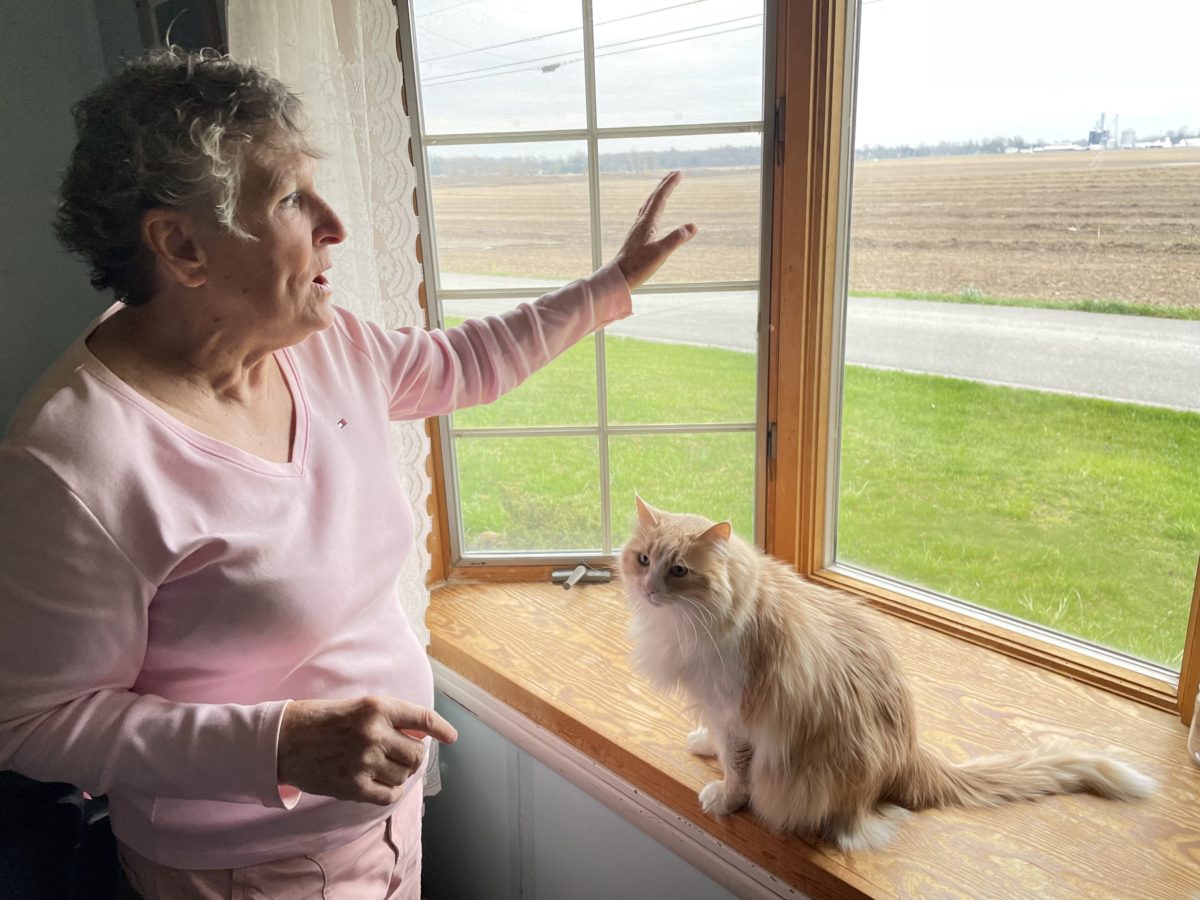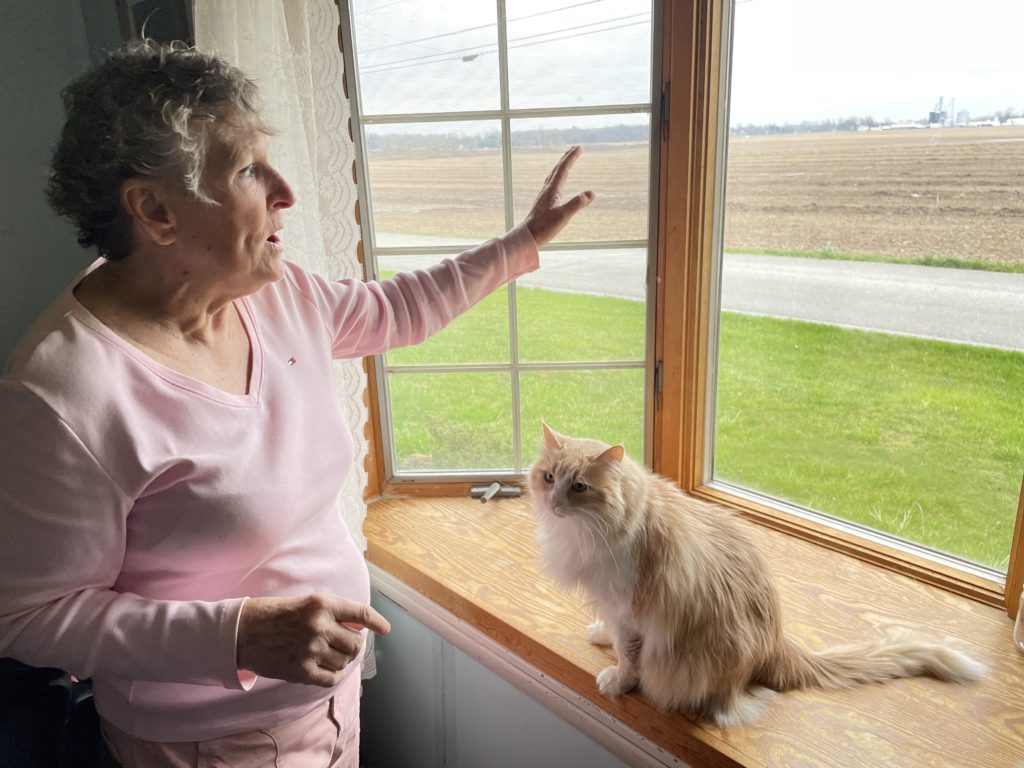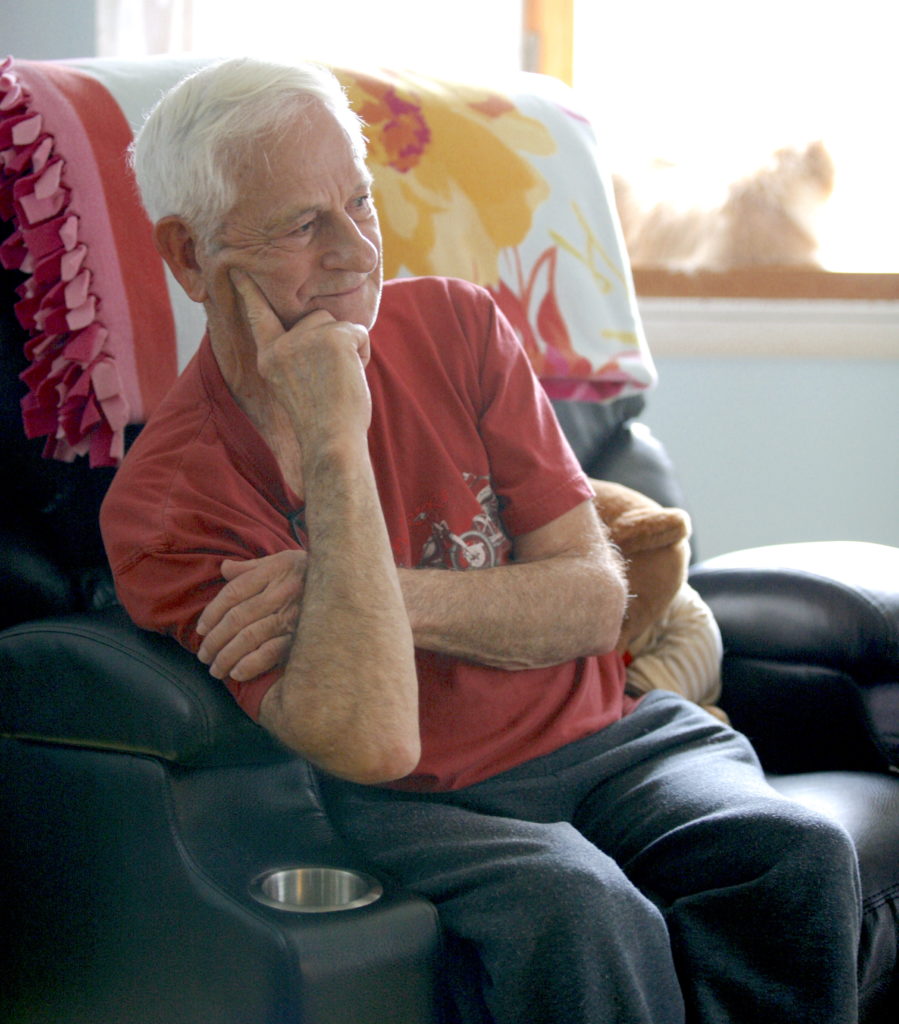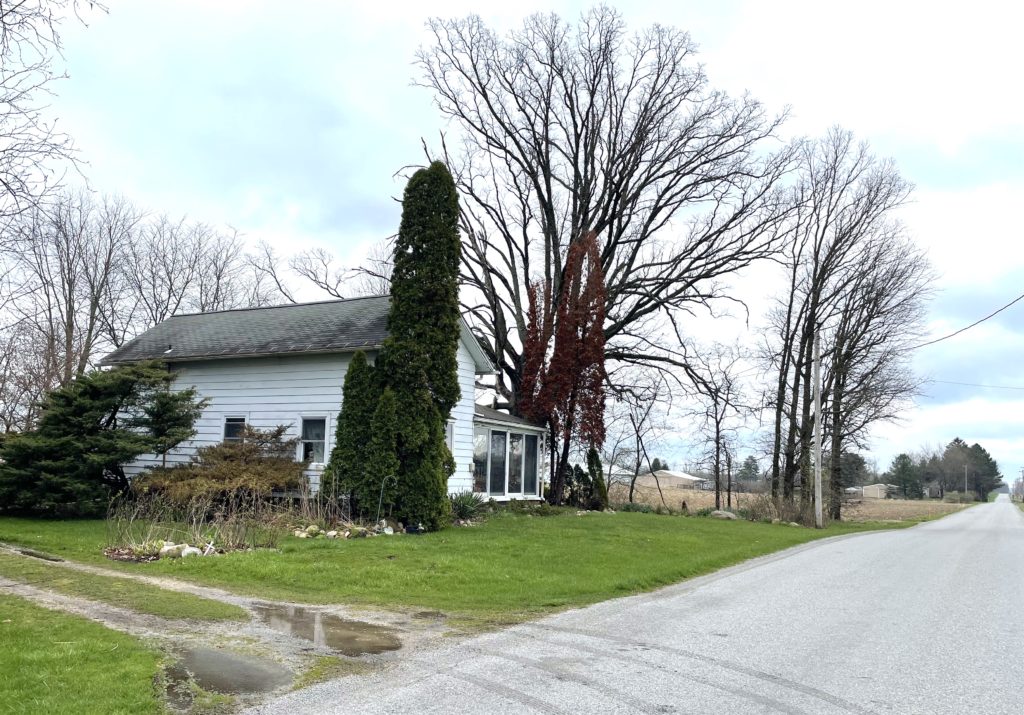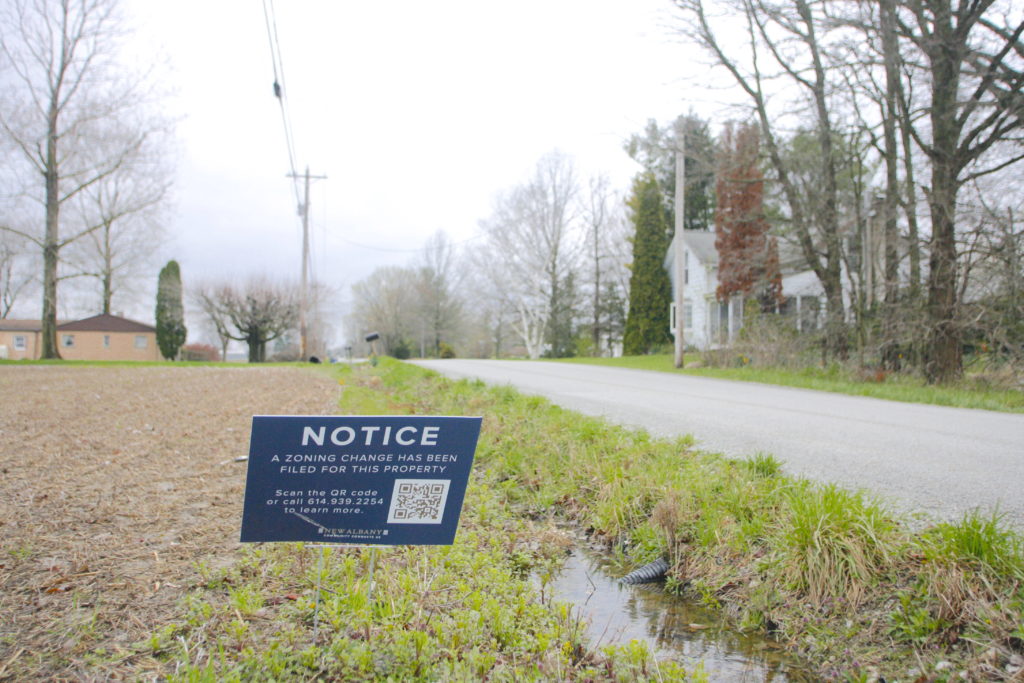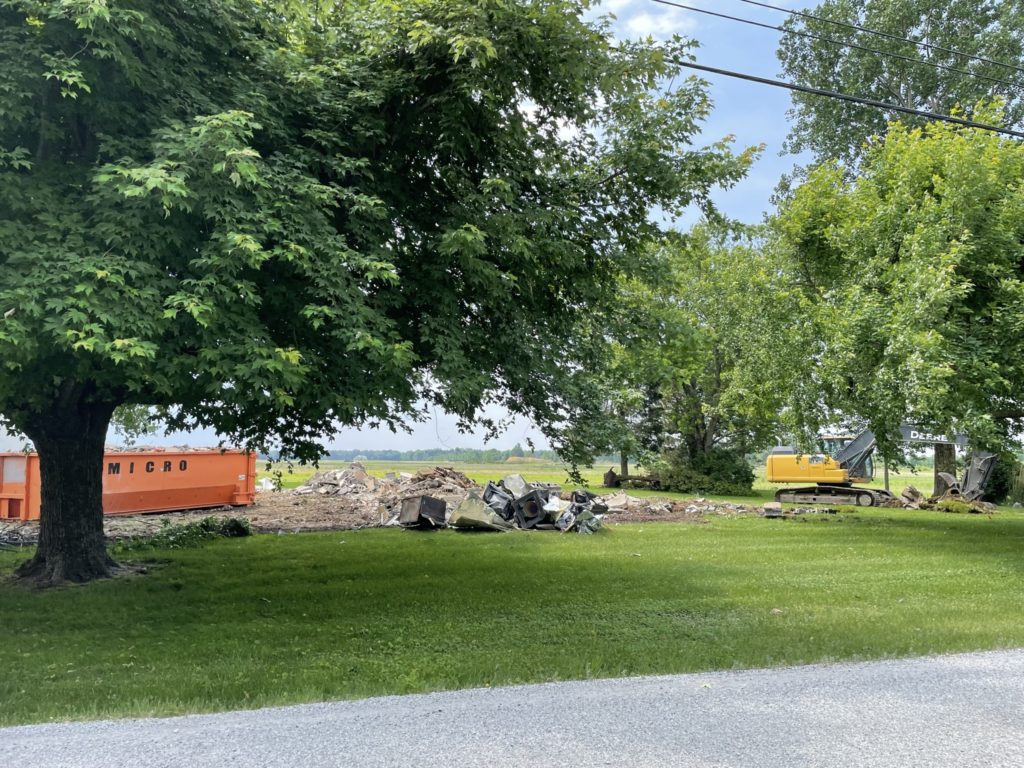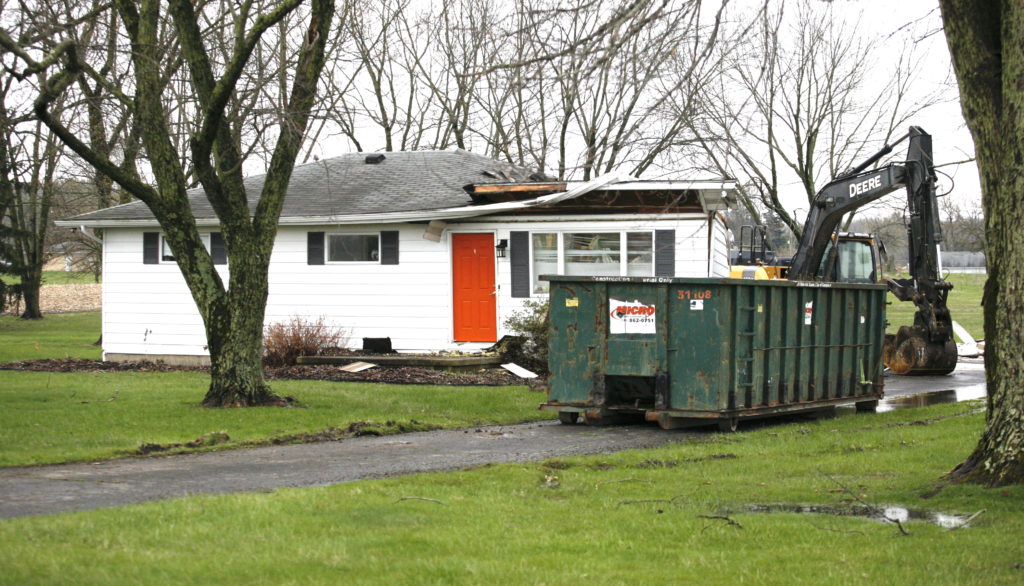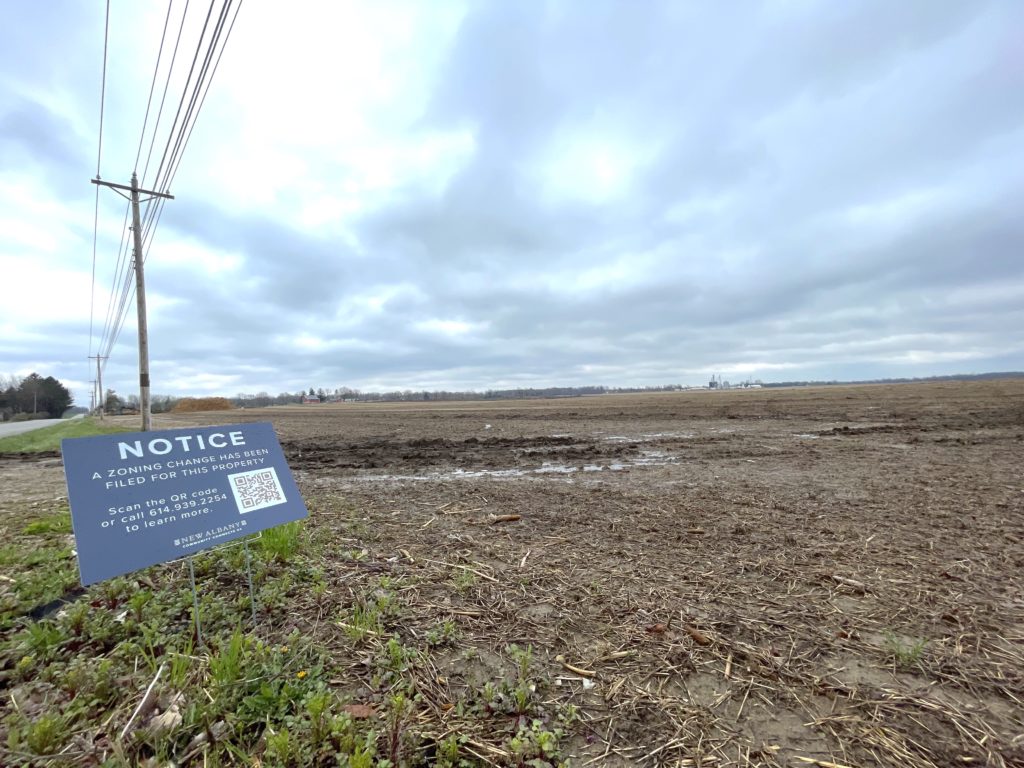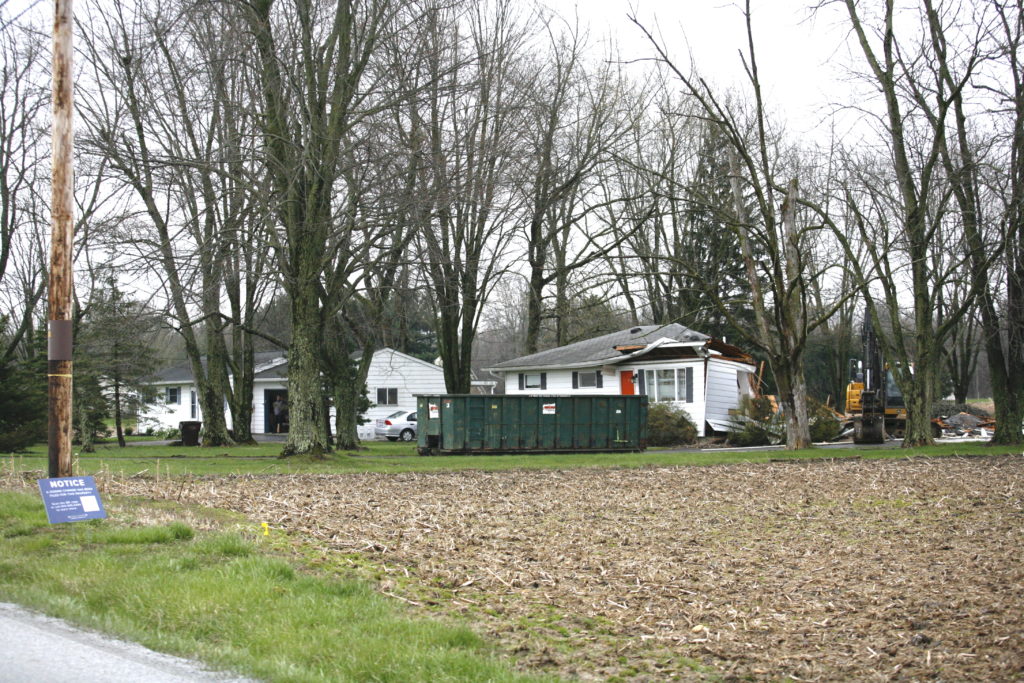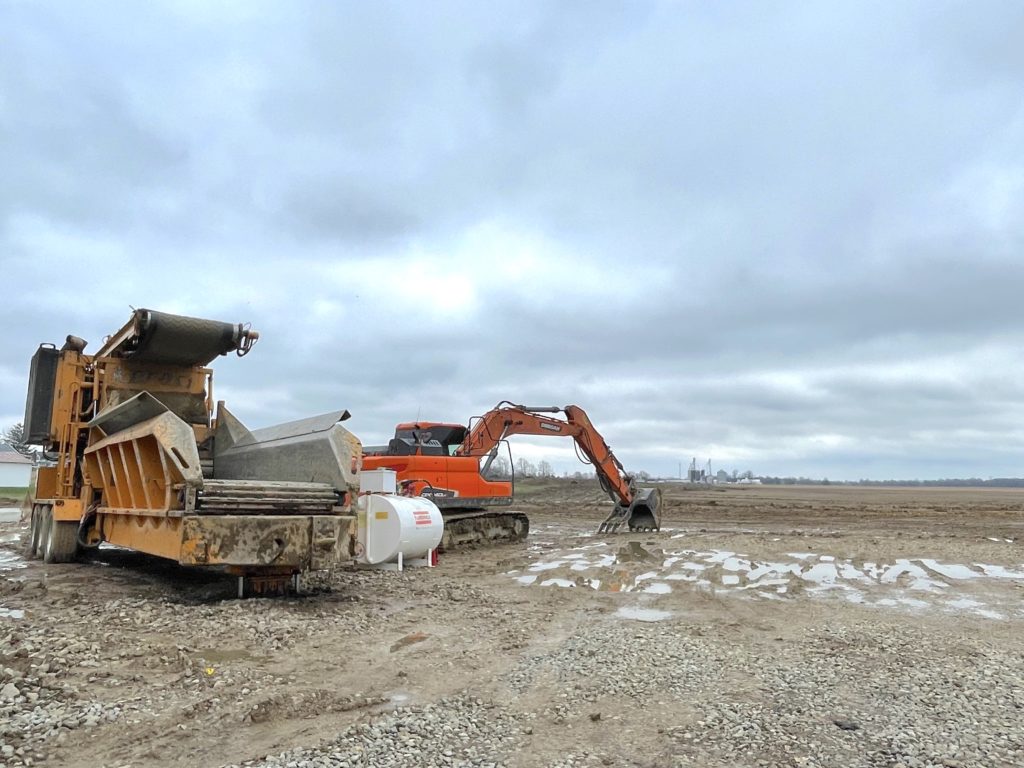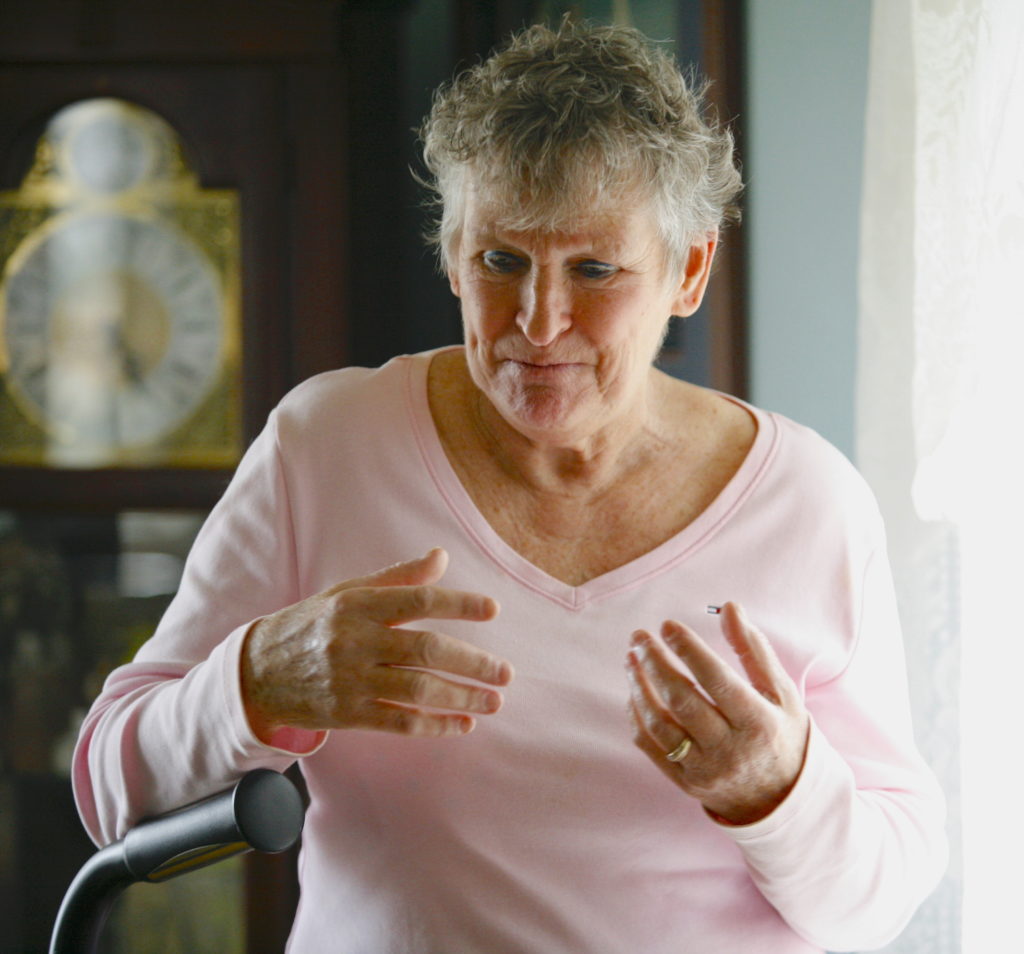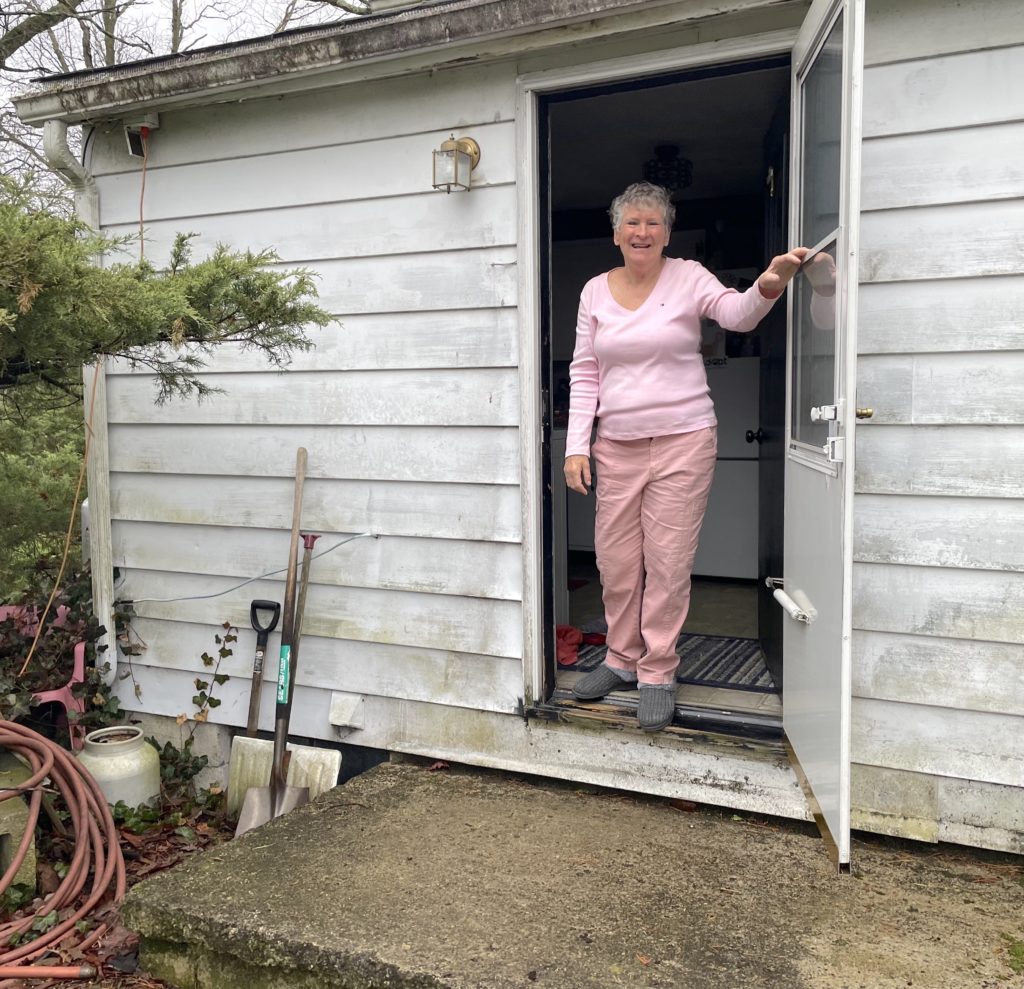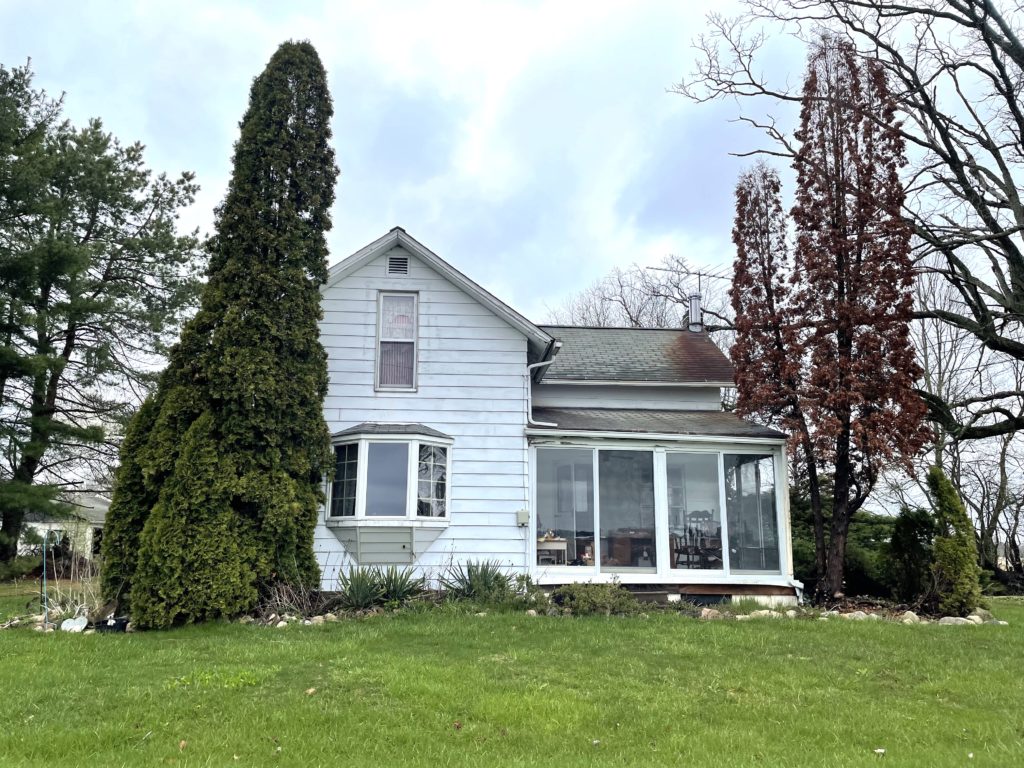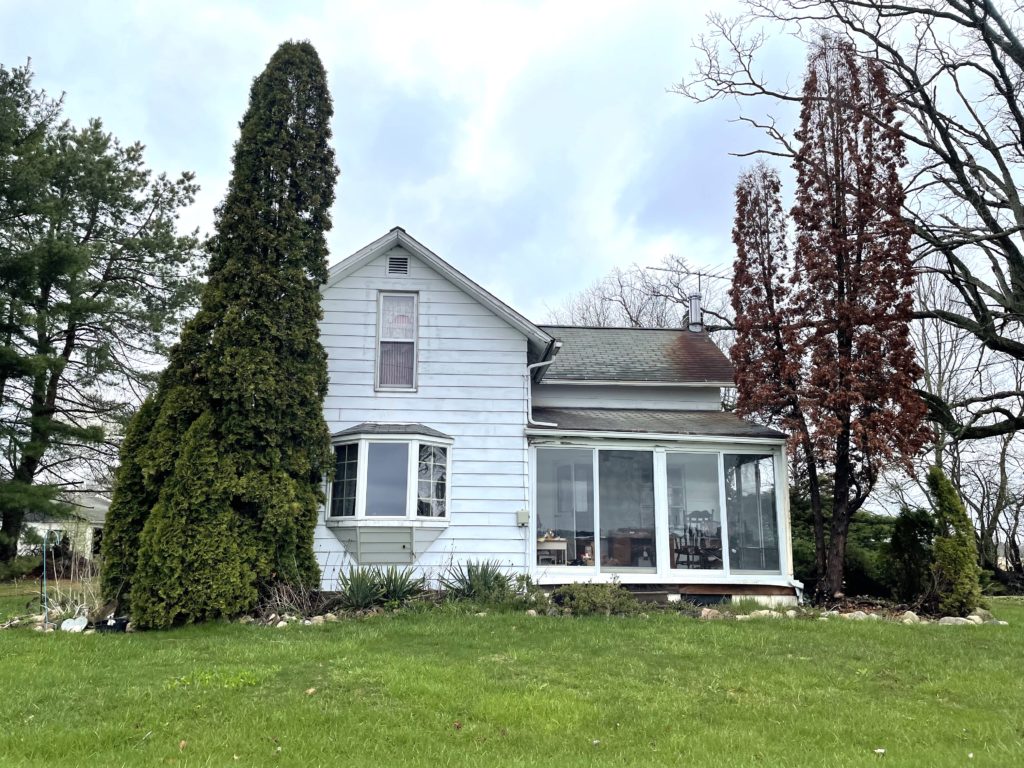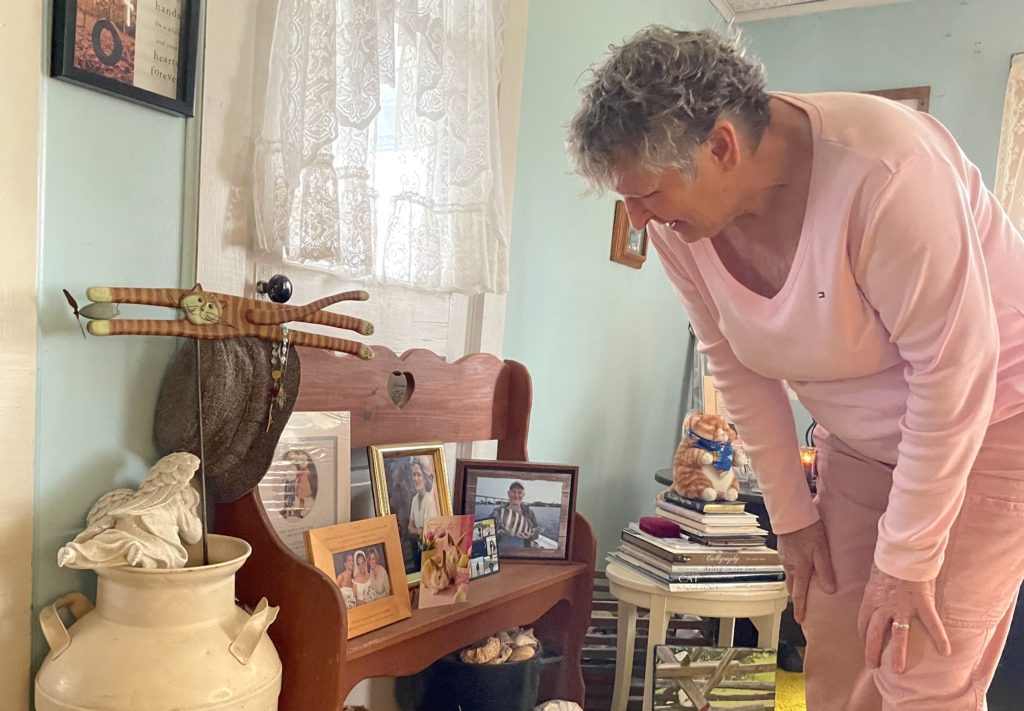It’s been half a lifetime since Barbara Vanhoose lived anywhere close to an ocean or the mountains. But outside the bay window of her living room in rural Licking County, she can picture places from her past.
“I had told my husband when I was younger that corn makes me think of the ocean because when the wind blows, it goes; it ripples. I look over and I know it’s just my imagination, but I can see the mountains,” said Barbara, 73.
She stands up from her easy chair to look outside her front window. The words are left unspoken, but it takes only a glance to see her ocean of corn is gone – never to return because a new neighbor plans to plant a factory where crops once grew.

“I had told my husband when I was younger that corn makes me think of the ocean because when the wind blows, it goes; it ripples…”
With a wistful smile and a wave of her hands, Barbara reflects on her life, and the disruption that a massive impending construction project has already made in her community. Barbara’s own roots on this road go back three generations to her great- grandparents, for whom Green Chapel Road is named. She and her husband, Danny, have lived on the same road in the same house for about 50 years, where they raised three daughters and built a community that they say feels like family.
By late March, blue signs appeared in yards and fields across the road from Barbara and Danny’s 100-year-old farmhouse, notifying them of a “zoning change,” a signal that the land and homes had been purchased and were set to be demolished. Behind the change is the New Albany Company, a real estate developer. It has been buying houses for Intel, the multibillion-dollar technology company, since at least the summer of 2021.
In communities surrounding the future Intel site, dozens of homes or lots have been sold this year to make way for construction, according to public records. On Green Chapel Road alone, homes are going for hundreds of thousands of dollars. One 1,500 square- foot home on nearly seven acres sold in February for $1.25 million.
Intel has pledged to invest $20 billion or more to create two of the largest computer-chip factories in the world in Licking County, just east of Columbus. Gov. Mike DeWine called it the largest private investment in the state’s history. The company is expected to employ 3,000 permanent workers and 7,000 construction workers and begin making computer chips by 2025.
The company is wasting no time clearing the land of buildings and trees to prepare for factory construction. On June 6, three demolition crews simultaneously razed three houses on Green Chapel Road, including the house directly across the road from the Vanhooses.
And the city of New Albany moved quickly to annex more than 1,600 acres of western Licking County to expand its existing industrial park, including the nearly 1,000 acres on which Intel plans to build.
One realtor calls it the “Midwest’s Silicon Valley.” Some community leaders have adopted “Silicon Heartland.”
Whatever you call it, change is happening fast on Green Chapel Road.
* * * *
Barbara heard rumors late last year that New Albany was coming their way. People were reluctant to believe her when she began to share with her family and friends what she was hearing. But she was right all along.
She compares Intel’s development to a hurricane that has blown through the community, with no official notice or warning until Intel announced it had chosen that site, which was a cause for pronounced frustration among the community.
“It would be nice if somebody had originally come up and down the road, perhaps telling people this was actually going to happen ahead of time,” Barbara said. “No one ever warned us. No one ever gave us any warning whatsoever.”
Homes that had been standing in the neighborhood for decades have been leveled or are set to be demolished to make way for the development. It happened to Barbara’s longtime friend of many years. Barbara used to walk down the road to her friend’s house to enjoy candy and homemade cookies.
“She called me her sister in heart, and she lived right down here at this house that’s now gone,” Barbara said while standing at the window, pointing across that road. While Barbara’s friend has moved to nearby Johnstown, the Vanhooses plan to stay put.
Their house is not on the future Intel site, and the New Albany Company has not approached them about selling. But they have received at least 10 letters this year and phone calls from companies offering cash for their home. Barbara has ripped up every one. She doesn’t want to give up the home she loves for pennies on the dollar, only for the buyer to turn around and resell it for more money.
“I know what you’re doing,” she tells them. “They really don’t want the houses or anything, they want the property.”
Barbara opens up easily to strangers, sharing detailed memories of her long life on Green Chapel Road as freely as she describes the dizzying experience of the recent changes. Her husband, a retired welder, is her inverse, quietly listening and occasionally offering a nod or one- or two-word answers to her questions. The couple live frugally and choose not to have a computer, relying on news collected through neighbors on their road or in places like the local library.
She remembers when Green Chapel was a dirt road. Her great-grandfather helped establish Johnstown, in 1813, and the road’s namesake landmark belonged to her great- grandmother’s relatives, the Greens, for whom the road is named. Long gone is that dirt road, but until the past few months, it still felt like the country. Green Chapel is now lined with construction equipment; houses in various stages of demolition; stacked, fresh-cut timber from what had been tree-lined fencerows, or fields of corn stubble that will never
see crops again.
It’s land that once was teeming with wildlife – rabbits, deer, raccoons, squirrels and birds galore – one of Barbara’s favorite attributes of the neighborhood. By May, the trees that were once a refuge for critters had been reduced to logs and steaming piles of mulch within sight of her front yard. Barbara mourns this loss already, as she spots fewer and fewer deer as construction ramps up.
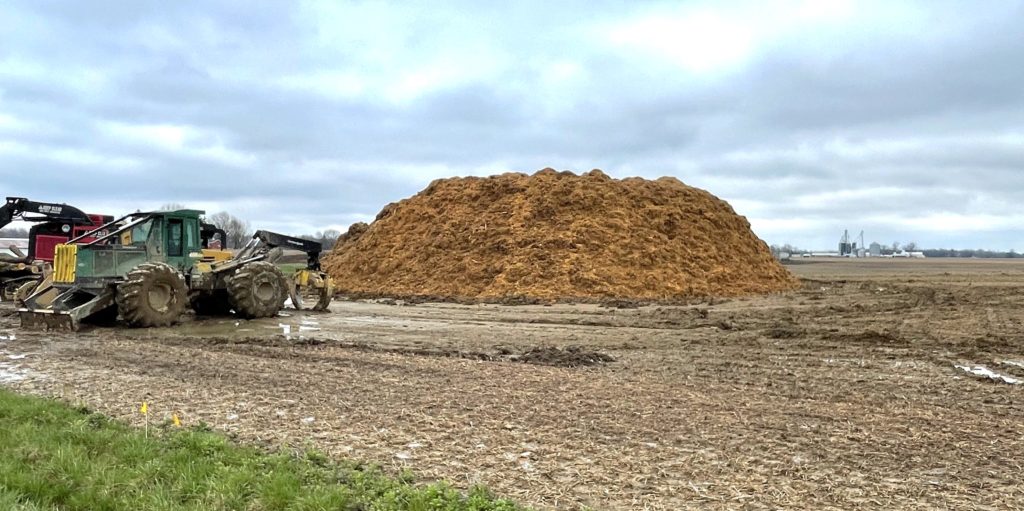
* * * *
Others share Barbara’s concerns about the land changes ahead and the way Intel worked out its plans outside of public view.
During a webinar last month, Carolyn Harding, a community organizer and Democratic candidate for Ohio House Representative, said the company “came in very secretively.” The event was hosted by ESGX, an online community of people interested in environmental, social, and governance issues as they relate to business.
“And many leaders in these smaller communities and townships didn’t even really know what was going on,” Harding said, adding later, “It’s going to turn this rural patch of farmland into a huge industrial complex.”
During the same online event, Fadhel Kaboub, associate professor of economics at Denison University, underscored Ohioans’ many outstanding questions surrounding Intel, ranging from workforce concerns to whether the region will have enough schools to educate an influx of students.
“In a sense, this is everything we’ve been asking for, right? High tech jobs, localizing the supply chains, creating jobs that pay well that are local,” said Kaboub, who’s also the president of the Global Institute for Sustainable Prosperity, which describes itself as “an independent public policy think-tank dedicated to the promotion of interdisciplinary research in the service of an improved quality of life for all members of society.”
“But also, we’ve always wanted all of these jobs to be sustainable, to have a positive impact on the community and on the environment. And this is now the part that we’re not sure about or a question we want to set up the right way.”
He noted a report in The Guardian last year that explored how the chip industry uses gasses, “many of which have a significant climate impact,” in one part of its production.
“The big question that everybody is asking [is] which technology will Intel set up in Ohio? … Are they going to use the old technology [which] would be old toxic gasses? … Or will they start this new factory with the most sustainable technology available on the market
with these [nontoxic] alternative gasses.”
“We haven’t heard anything about the specifics of the technology.”
The company’s imprint will be long-lasting. “And if it’s not done the right way, there’s going to be a pocket of jobs and wealth and economic activity and other pockets of neglect and potential socio-economic exclusion. That’s not the way we want it. We want this done the right way from the get-go,” Kaboub said.
Intel is a leader among semiconductor companies in terms of sustainability, with commitments to water efficiency and gender and racial diversity, noted R. Paul Herman, chief executive of Human Impact & Profit Investor, on the webinar. Intel has said it wants to use only renewable energy across all operations by 2030.
Intel details online its environmental impact at its roughly 700-acre campus in centra Arizona. It used 760 millions gallons of water and generated more than 8,200 tons of hazardous waste in the last three months of 2021.
Intel did not respond to a list of questions sent by The Reporting Project to the company’s media relations division.
* * * *
The Vanhoose home is filled with the kind of character that takes years to cultivate. Shelves in their living room are lined with photos of their three daughters. Coffee table books, including some about cats, sit atop a small table, near a figurine of a sleeping cat. (Barbara loves animals.) An image of Jesus and of Catholic religious icons are on display, and their kitchen is a hodgepodge of Barbara’s vintage finds: Teacups, saucers, and porcelain figurines line the walls.
“My house was like a museum with every child in the neighborhood,” she said. “Every child wanted to come here.”
The front of their home includes the bay window and a sunroom where Danny sometimes sits to watch the changing landscape.
One of Vanhooses’s daughters, Gabrielle Nunn, who now lives in Arizona, took to Facebook in frustration over what’s happening near her childhood home: “My mom and dad will have to sit and be among this ‘progress’ and watch their world be destroyed.”
“How can someone’s home (their property) and life be bought out from underneath them? Money and greed,” she continued. “They don’t see the many memories made by families. Memories of watching wheat fields sway in the breeze. Playing hide and seek in the corn fields. Playing in a treehouse with the boys. Babies born and growing up in the home.”
On a recent afternoon, less than a mile from the Vanhoose’s home, another house sat half demolished, the back of the home splintering away from the rest like a giant cookie half eaten. A neighbor, Josh, 39, remembers coming home from work and feeling surprised to see the house being torn down so quickly. He said the family have lived there for more than four decades.
A housing rehab specialist, Josh said he put a lot of work into renovating his two- bedroom home after buying it in 2018. But he received a letter from the New Albany Company last September and recently sold his home to the firm with plans to move elsewhere in the area in late August.
He declined to share his last name since he’s still living in the house. At some point during the process, residents who sold their property signed non-disclosure agreements, legally requiring them to refrain from speaking about the settlement until its final.
The development feels familiar to Josh, who watched something similar play out when he was a kid growing up in New Albany. In 1987, billionaire Leslie H. Wexner and his business partner, John W. Kessler, chairman of the New Albany Company, began buying up property close to Josh’s parents’ home, creating a golf course, country club, and other attractions. Their firm, the New Albany Company, sought to “spearhead the metamorphosis” of the city, its website says.
“When they are going to try and annex something, it always happens,” Josh said. “They have deep, deep pockets. … So I just knew that it was inevitable” and “not really going to be debated.”
While he’s sad to lose the hard work he put into the house, he doesn’t have the emotional investment that is making this difficult for families like the Vanhooses. Josh hasn’t found a new house yet, but he intends to stay close to this area.
And he thinks of the people across the road who “aren’t part of the land grab.”
“I mean, I guess their property value will go up, but I don’t know if they want to live across from a canyon of warehouses.”
As the weeks go by, the landscape across the road from Barbara and Danny Vanhoose’s place changes daily as more houses fall on Green Chapel Road, and all evidence of the ocean of corn is scraped away.
“I just keep my doors closed,” Barbara said, “and keep my curtains shut.”
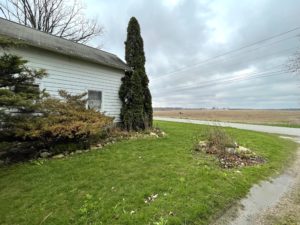
Faith Boirard, Molly Born, Pol Le and Alan Miller are part of The Reporting Project in
Denison University’s Journalism Program, which is supported in part by The Andrew W.
Mellon Foundation.
thereportingproject@denison.edu
@JournalismDU

